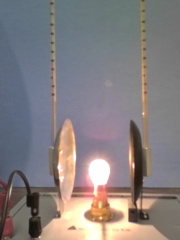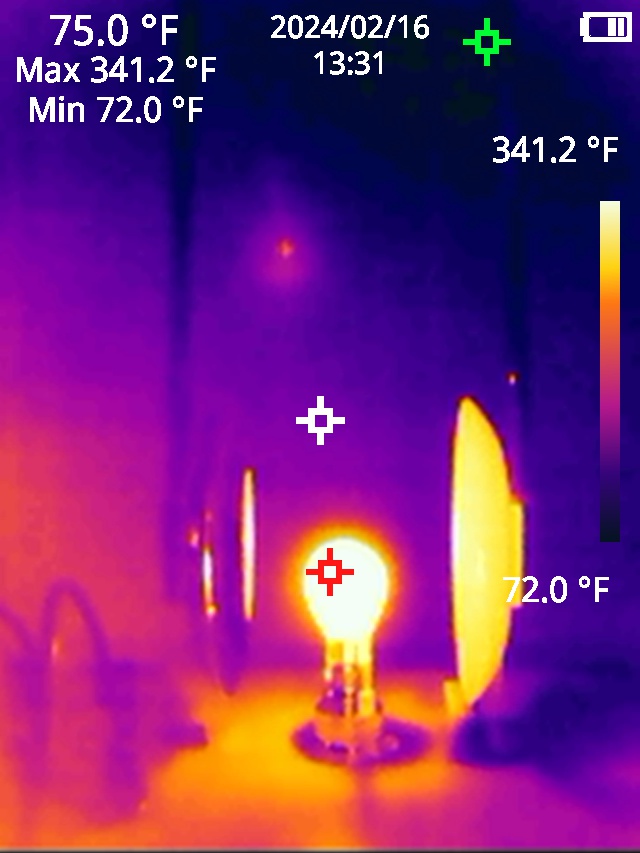4A50.10 • Heat Absorption and Radiation
Photos Show the Demonstration Used at U.T. Austin
Safety:
- The light bulb will become hot during the demonstration. DO NOT touch the bulb until it has cooled.
- The port for the thermometers is metallic. Insert thermometers carefully so that they do not break.
Instructions:
- Ensure that the 12-V power supply is connected to the apparatus. 10 V of power is enough to ensure the demo's heat rises without being blindingly bright.
- Record the temperature of the two reflectors prior to turning the apparatus on.
- Turn on the power supply and start a stopwatch.
- Record temperature of both reflectors at 1-minute intervals for 5 minutes.
- Turn off the bulb. Record the temperature of both reflectors at 1-minute intervals for another 5 minutes as they cool down.
- This should show that the black reflector takes longer to completely cool. The black reflector absorbs all wavelengths of light and converts them to heat, while the silver plate reflects wavelengths of light and its heat does not noticeably increase.
Concept Conveyed:
- Conversion of radiant energy to thermal energy.
- Comparison of thermal absorption and thermal radiation rates.
- More radiant energy is absorbed by the black reflector and converted to thermal energy. This is apparent because the thermometers will show the temperatures of each reflector.
Partner Demos:
- The heat absorption demo works well when paired with the thermal camera demo. The thermal camera can visually show the difference between the heat increase of the black versus silver plates, rather than relying on temperature values from the thermometers.
Last updated on October 14, 2024


